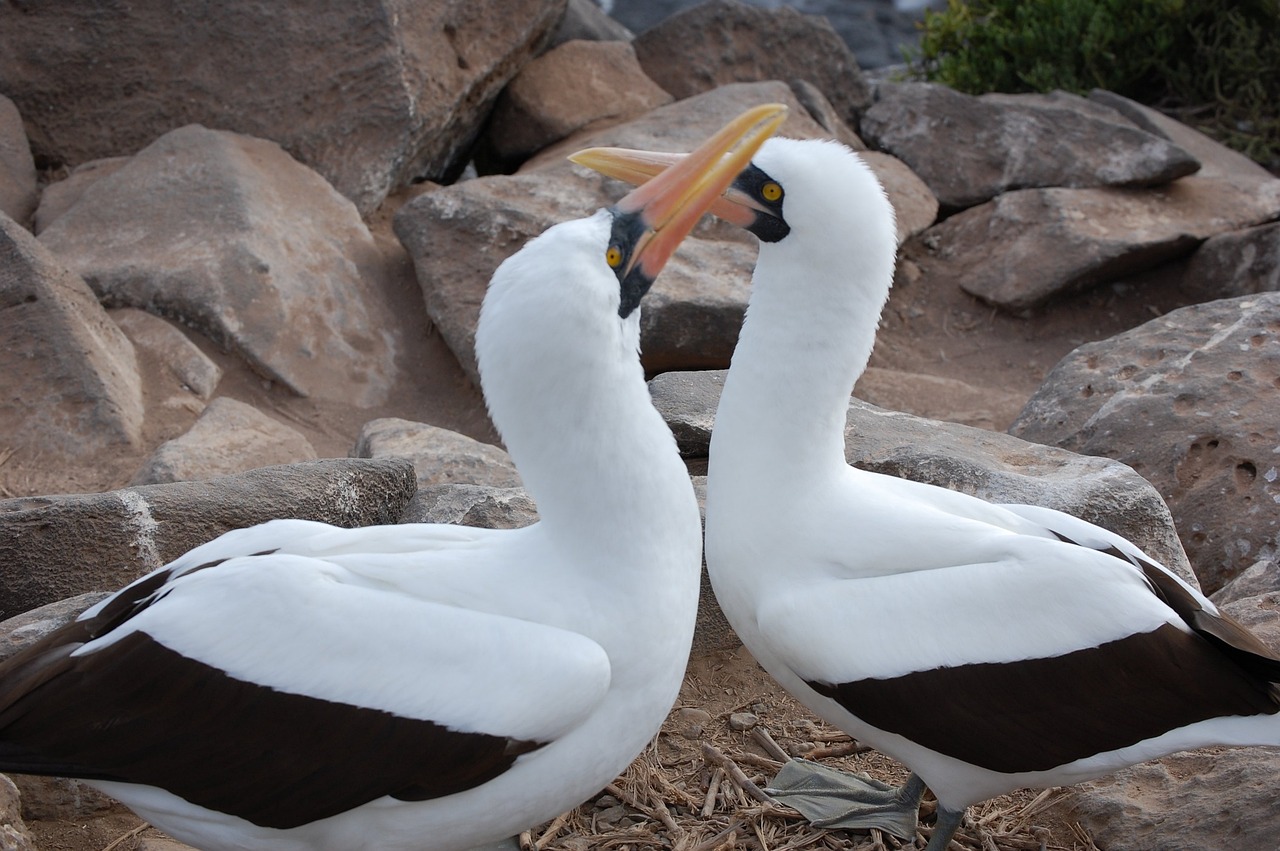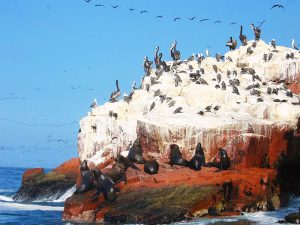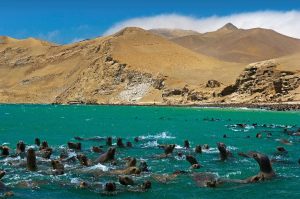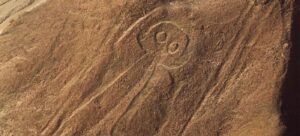
Wildlife seekers will be searching for all kinds of rare mammals and birds when heading to Peru, however no trip can be properly complete without spotting the Nazca Booby.
One of the most iconic maritime birds, it can actually be found all along the eastern Pacific close to countries such as Mexico, Costa Rica and Colombia. However those in Peru will have an especially good chance, given they are common to see when heading on day trips from the capital of Lima.
In this guide we’ll explore everything you need to know about the Nazca Booby, including what makes it an iconic Pacific bird, where you can spot them in Peru as well as answering your most burning questions in our FAQ section.
Table of Contents
What Is The Nazca Booby?
A district species that comes from the Sulidae family, the Nazca Booby is a large seabird found along the coasts of the east Pacific Ocean. It’s easily recognisable with its long orange bill, a tall white body as well as its black wings and black tail.
The Nazca Booby is also known for its distinct black shape on its face which looks like a mask, and helps us to distinguish it between other maritime seabirds such as the Blue-footed Booby. They usually feed on small fish and anchovies using a deep diving technique, although they are also known to eat squid and other less-common species when food supplies are low.
Where Can We Find The Nazca Booby Bird In Peru?
Although their name might suggest we can find them around the city of Nazca in Peru, this is not true as they are a maritime bird – and this city (which is famous for being home to the Nazca Lines) is located some 65km in-land from the coast.
The Nazca Booby primarily breeds and lives on islands of the Pacific such as the Galápagos Islands and Isla de la Plata near Ecuador, however are known to venture further in search of food. Within Peru this makes them possible to be sighted in various places, such as near the Ballestas Islands of Paracas which is close to Lima, as well as further north in the regions of Lambayeque and Piura.

The Nazca Booby Bird In Peru FAQ
In this section we’ll now explore the most frequent questions we get about the Nazca Booby Bird in Peru, as well as anything else you need to know.
What Are Some Interesting Facts About Nazca Boobies?
One of the most interesting facts is how siblings in the nest can often attack and kill each other in order to survive, given food resources can be very low and competition for survival of the fittest is high. The Nazca Booby bird is also known to perform plunge-dives of over 30m before breaching the sea, as it helps them to locate foods such as Anchovies, Squids and other small fish.
Are Nazca Boobies Endangered?
Thankfully the Nazca Booby is considered to be a non-threatened species, with them currently being listed as a species of “Least Concern” on the IUCN Red List. Although population numbers are slowly decreasing, there are thought to be over 40,000 Nazca Booby birds alone on the Galápagos Islands archipelago – without counting other colonies on islands close to Mexico, Colombia and Central America, as well as those of the Ballestas Islands that are near Lima Peru.
What Is The Nazca Booby Behavior?
Typically, Nazca Booby birds live for between 20-25 years, and are born and reared on islands within the Eastern Pacific such as those close to Mexico and Colombia. The nesting season occurs for 9 months a year, with the season varying depending on the locations of each island and sea conditions. Babies tend to be quite big for maritime birds, and as such nests are usually made right at the top of cliffs – which helps them gain flight despite their heavier weights (which is similar for other booby birds).

Overview Of The Nazca Booby Bird In Peru
And that’s all for this guide on everything you need to know about the Nazca Booby, and how you can spot this maritime bird in Peru.
Despite usually reproducing and growing up on islands within the Eastern Pacific Ocean, the Nazca Booby bird can also be spotted along the coasts of Peru when searching further afield for food. They are easily recognisable with their black masks, as well as their orange bill and black tail.
Are you looking to spot the Nazca Booby and other maritime species when in Lima? Be sure to check out our Ballestas Islands Tour From Lima, where you can also see Guanay Cormorants, Peruvian Pelicans as well as the legendary Humboldt Penguin.





